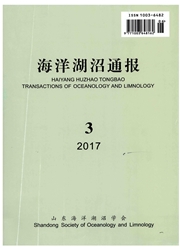

 中文摘要:
中文摘要:
溺谷型海湾是我国广西沿海广泛发育的典型海岸地貌类型,其悬浮体扩散过程和对曲折海岸环境的影响研究尚开展不多。根据2013年10月实测的大风江口悬浮体浓度数据,结合不同潮汐状态下的多期LandsatTM/ETM+卫星影像资料,对大风江口及毗邻海域的悬浮体时空分布和扩散特征进行了总结分析。结果表明,观测期间悬浮体浓度介于1.4~56mg/L之间,且底层高于表层,口门内大于口门外;悬浮体遥感反演的结果也表明,该区水体悬浮体浓度总体较低,径流携沙入海和不同潮汐状态是影响悬浮体浓度时空变化的重要原因之一。在北部湾潮汐顶托和沿岸NE-Sw余流的影响下,河流入海物质主要在河1:2落淤和沿岸输移,参与河口横向拦门沙发育和溺谷型海湾的次生改造过程。
 英文摘要:
英文摘要:
Based on water samples collected in October, 2013 and Landsat ETMq- images, the suspen- ded sediment concentration (SSC) distribution patterns and diffusion mechanisms in the Dafengjiang es- tuary are investigated. It is found that the SSC is higher at the bottom layers than at the surface layers and larger in the inner estuary than in the outer estuary, with the value ranged from 1.4 to 56 mg/L. The retrievals from the satellite indicate that the SSC is low basically and that the main factors control- ling the SSC variations in the spatial and temporal distributions are the runoff of the Dafengjiang Estu- ary and the tidal cycle there. The tidal lockup and tide-induced residual currents are main contributors to the sediment of the suspended matters around the Dafengjiang mouth and the diffusion alongshore. The suspended sediment affects the morphological evolution of sand bars and the development of drowned valley bays.
 同期刊论文项目
同期刊论文项目
 同项目期刊论文
同项目期刊论文
 期刊信息
期刊信息
